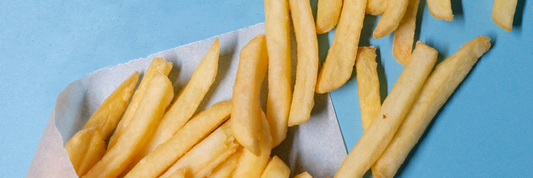Goat cheese comes in a wide variety of textures and flavors, from soft, creamy spreads to firm, crumbly wheels. Each type has its own unique characteristics, influenced by factors like milk quality, aging, and production methods.
In this guide, you will explore the main types of goat cheese, learn how they differ in taste and texture. Whether you are a chef, a food lover, or simply curious, this post will help you understand the delicious diversity of goat cheese.
- The Best Goat Cheese Recipes for Every Occasion
- What Does Goat Cheese Taste Like?
- Goat Cheese vs. Cow Cheese: Key Differences & Health Benefits
What Is Goat Cheese?
Goat cheese, often called chèvre, is a dairy product made from goat’s milk. Unlike cow’s milk cheeses, goat cheese is prized for its distinct tangy flavor, creamy texture, and subtle earthiness. Its origins trace back thousands of years, with early evidence of goat milk consumption and cheese-making found in regions across the Middle East, Europe, and North Africa. Goat cheese has long been valued for its versatility and ease of digestion, making it a staple in many traditional diets.

The composition of goat milk plays a major role in shaping the cheese’s flavor and texture. Goat milk has smaller fat globules and a different protein structure compared to cow’s milk, which results in a softer curd, a lighter, creamier mouthfeel, and a slightly tangy taste even in fresh varieties. These characteristics also allow goat cheese to absorb flavors from herbs, fruits, or spices exceptionally well, making it highly adaptable for cooking and serving.
Its unique flavor and texture have made goat cheese increasingly popular in cafés, restaurants, and gourmet menus worldwide. Fresh chèvre works beautifully in salads, spreads, and tarts, while aged varieties bring depth to pasta, pizzas, and cheese boards. Chefs and food enthusiasts alike choose goat cheese not only for its taste but also for the visual appeal it adds to dishes, from crumbly white crumbles to elegant creamy logs.
Types of Goat Cheese
Goat cheese presents a wide spectrum of flavors, textures, and aromas that vary depending on the milk, production method, and aging process. Each type offers a unique culinary experience, making it important to understand their differences to fully appreciate their versatility in cooking and serving.
Fresh Goat Cheese (Chèvre)
Fresh goat cheese, or chèvre, is the youngest and softest form of goat cheese. It is unaged, high in moisture, and has a bright, tangy, and slightly citrusy flavor. Its texture is creamy, spreadable, and lightly crumbly when chilled, making it very approachable for people new to goat cheese.
Production Process: Fresh chèvre is typically made by adding rennet or natural acids like lactic acid to goat milk to form curds. The curds are gently drained without pressing, preserving high moisture levels and creating a soft, silky texture. Salt is lightly added to enhance flavor, and sometimes herbs or spices are mixed in to create specialty variations.
Flavor and Texture Nuances: Because it is fresh, chèvre maintains a lively tanginess without the earthy or nutty undertones that develop during aging. It melts easily in the mouth and blends seamlessly with other ingredients, allowing its tang to complement or balance flavors rather than overpower them.
Best Culinary Uses:
- Spread on toasted bread, crackers, or crostini as an appetizer.
- Crumbled over fresh salads for a burst of tang and creaminess.
- Folded into creamy dips, omelets, or pasta dishes.
- Incorporated into desserts like tarts, cheesecakes, and mousses for subtle tang.
Fresh chèvre pairs beautifully with fruits such as figs, apples, berries, or pears. A drizzle of honey or a sprinkle of toasted nuts elevates both flavor and presentation.

Semi-Soft Goat Cheese
Semi-soft goat cheese sits between fresh and aged cheeses. It has a smooth, slightly firm texture and a mild, creamy taste. While it retains some of the fresh tang of chèvre, it develops subtle earthy and nutty notes due to brief aging, usually two to six weeks.
Production Process: After curd formation, the cheese is lightly pressed or shaped into small logs, rounds, or discs. Aging occurs in controlled environments with specific temperature and humidity levels. Some varieties are coated with ash, herbs, or spices, which helps develop an attractive rind and subtly influences flavor.
Flavor and Texture Nuances: Semi-soft goat cheese is slightly firmer than fresh chèvre but still spreadable at room temperature. Its flavor is mild enough to appeal to a wide range of palates yet complex enough to enhance sandwiches, pizzas, and baked dishes.
Best Culinary Uses:
- Melt over pizzas, flatbreads, or baked sandwiches.
- Include in quiches, gratins, and savory tarts for a creamy layer of tangy richness.
- Slice for cheese boards where a mild yet structured cheese is desired.
- Pair with roasted vegetables or fresh herbs to highlight subtle nutty undertones.
This type of goat cheese is especially versatile for cooking, as it maintains its creamy texture while heating, making it ideal for dishes that require both flavor and meltability.
Aged Goat Cheese
Aged goat cheeses are firm to crumbly and develop pronounced, complex flavors. Aging concentrates the tanginess of the milk and introduces earthy, nutty, and sometimes slightly spicy notes. Aging periods can range from a few months to over a year, depending on the style and desired intensity.
Popular Examples:
- Crottin de Chavignol (France): Small cylindrical cheese with a crumbly texture and a pronounced tangy flavor that intensifies with age.
- Garrotxa (Spain): Medium-firm cheese with a grayish rind, earthy flavor, and delicate nutty notes.
Production Process: Aged goat cheeses are carefully monitored in controlled conditions. The cheeses are often turned and brushed to help form rinds that influence flavor, texture, and appearance. The reduction in moisture during aging creates a firmer texture and more concentrated taste.
Flavor and Texture Nuances: Aged cheeses have a deeper flavor than fresh or semi-soft varieties, often displaying earthy, savory, and nutty undertones alongside the natural tang of goat milk. Texture can range from firm and sliceable to slightly crumbly, offering a satisfying mouthfeel.
Best Culinary Uses:
- Served on cheese boards with fruits, nuts, and honey to balance tanginess.
- Grated or shaved over pasta, roasted vegetables, or salads to add depth.
- Incorporated into savory tarts, soufflés, and gourmet sandwiches.
Aged goat cheese is perfect for those who enjoy bold, complex flavors and want a cheese that stands out as a centerpiece on a plate.
Blue Goat Cheese
Blue goat cheese is infused with blue mold, creating a marbled appearance and bold, distinctive flavor. It combines the tang of goat milk with the pungent, earthy characteristics of mold cultures.
Production Process: The cheese is inoculated with Penicillium cultures and pierced during aging to allow air to circulate, promoting even mold development. The balance of goat milk tang and mold intensity produces a layered flavor profile that is both creamy and robust.
Flavor and Texture Nuances: Blue goat cheese is intensely flavored, with tangy, creamy, earthy, and slightly spicy notes. The texture varies depending on age, ranging from creamy semi-soft to firmer, crumbly varieties.
Best Culinary Uses:
- Crumble over salads or roasted vegetables for a bold, tangy punch.
- Incorporate into creamy sauces or dressings for pasta, pizza, or gratins.
- Pair with wines, nuts, or honey to balance and highlight flavors.
- Feature on cheese boards alongside fruits, cured meats, and crusty breads.
Blue goat cheese is ideal for adventurous eaters or gourmet dishes, offering a dramatic flavor contrast that enhances a wide variety of recipes.
FAQs About Goat Cheese
Goat cheese raises a lot of questions among food lovers, home cooks, and cheese enthusiasts. Here are answers to some of the most common queries.

Does Goat Cheese Contain Lactose?
Yes, goat cheese does contain lactose, but often in lower amounts than cow cheese, especially when aged. Lactose is a sugar naturally found in milk, and during the cheesemaking and aging process, much of it is broken down.
Why Some Lactose-Intolerant People Can Tolerate Goat Cheese:
- Lower Lactose Content: Fresh chèvre contains less lactose than fresh cow milk cheese, and aged goat cheeses often have negligible levels.
- Enzymatic Breakdown: The fermentation process converts lactose into lactic acid, reducing the sugar content and making it easier to digest.
- Smaller Fat Globules: Goat milk’s fat structure can help slow digestion and improve tolerance in sensitive individuals.
This makes many goat cheeses a viable option for people who are mildly lactose intolerant, though tolerance levels vary individually.
Is Goat Cheese Easy to Digest?
Goat cheese is generally easier to digest than cow cheese due to differences in milk composition.
Fat Structure in Goat Milk:
- Goat milk contains smaller fat globules and a higher proportion of short- and medium-chain fatty acids.
- These fats are more easily broken down by the digestive system, allowing smoother digestion compared to cow milk cheese, which has larger fat globules and more long-chain fatty acids.
Benefits for Sensitive Stomachs:
- Reduced casein alpha S1 protein: Goat milk has lower levels of this protein, which is often linked to milk sensitivities.
- Less bloating: Many individuals report fewer digestive issues, such as gas or discomfort, when consuming goat cheese instead of cow cheese.
- Gentle on the gut: Its slightly acidic nature and probiotic-friendly properties from fermentation can support healthy digestion.
Conclusion
From mild and creamy to bold and complex, goat cheese offers endless culinary possibilities. Selecting the right type not only elevates your recipes but also creates memorable dining experiences and adds a signature touch to your menu. To keep your cheeses fresh, flavorful, and visually appealing, consider using Kimecopak’s sustainable food-grade containers, designed specifically to preserve delicate cheeses while presenting them beautifully to your customers.
Contact us now to find the right sustainable packaging for your needs.







